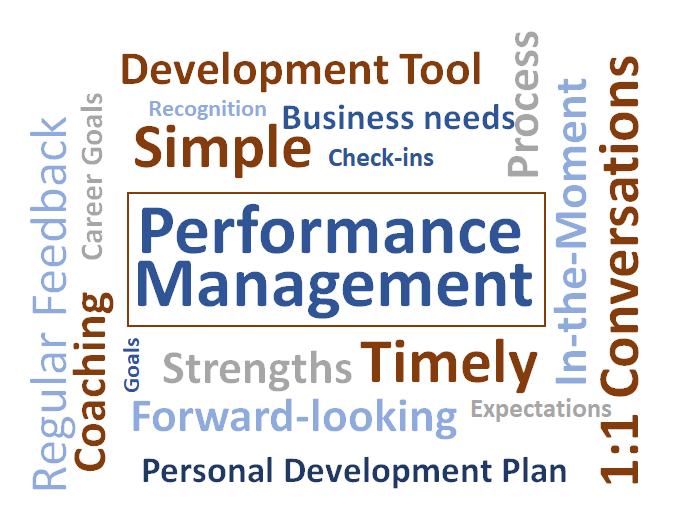In my last article I talked about some of the strategies you, as a business leader, can implement to “recession proof” your organization.
This time I’d like to share another strategy – cross training – that can help you get through the bad times, and also has myriad benefits – for both the organization and employees – during the good times.
Benefits to the organization:
Increased organizational agility – i.e., the ability to quickly fill a skill gap when an employee leaves. Replacing an employee can cost nearly one and a half times the employee’s salary, including recruiting, hiring, and training costs, plus the cost of lost productivity. Having someone cross-trained and already up to speed to fill the role – even temporarily – can reduce or even avoid those costs.
Greater “big picture” business operations knowledge among employees. When employees have the opportunity to broaden their company knowledge beyond their specific role it gives them a better appreciation of others’ contributions and increased understanding of the various interdependencies in the workflow. It can also spark ideas for improvements and increase interest in growing with the organization.
Increased engagement and potentially reduced turnover. Often, employees who are dissatisfied with their job immediately look elsewhere without considering a lateral or upward move within the organization. By giving them a “taste” of internal opportunities, they see a future for themselves within the organization and are less likely to jump ship.
Bigger pool of employees who can be promoted from within. Hiring from the outside takes time. Having a pool of cross-trained employees who come fully equipped with company and process knowledge can avoid the lag time while a newbie gets up to speed and prevent the loss of existing talent.
Preparation for future talent needs. If you anticipate that a particular function in your business may be phased out, cross training employees who will be affected by that is a great way to get them ready for the change and keep them on board.
Benefits to employees:
New skills and opportunities. Employee surveys indicate that key dissatisfiers for employees are lack of opportunity and lack of development. Cross training can address both of these concerns by giving employees new skills and exposing them to opportunities within the organization.
A chance to demonstrate their value beyond their current role. If the cross training includes working with a different leader or different team, the employee has the opportunity to show their skills and qualities in what may be a future opportunity.
Increased motivation and reduced burnout. They say a change is as good as a vacation. Learning something new and developing new skills or using skills that were underutilized in their current role can spark increased motivation prevent burnout.
A couple of additional benefits for both the organization and employees is that you, or the employee, may discover hidden talents that have been dormant while performing their existing role, and learning about each others’ jobs can create a more cohesive team.
If you need help in setting up a cross training plan, please reach out to me at michelle@connecttohr.com.




 Over the past few months I’ve been talking about the skills required to be an effective leader. So far I’ve talked about listening, self-awareness and conversational intelligence. Another skill that is being increasingly recognized as an essential leadership skill is empathy. Although we’re not seeing it demonstrated much on the national stage, empathy has been called THE skill for the 21st Century.
Over the past few months I’ve been talking about the skills required to be an effective leader. So far I’ve talked about listening, self-awareness and conversational intelligence. Another skill that is being increasingly recognized as an essential leadership skill is empathy. Although we’re not seeing it demonstrated much on the national stage, empathy has been called THE skill for the 21st Century. For an organization to succeed, it needs quality products or services, engaged employees, and effective leaders – at every level.
For an organization to succeed, it needs quality products or services, engaged employees, and effective leaders – at every level. There has been much discussion recently about the disparity in pay and opportunity for women and minorities across a variety of industries. And although Silicon Valley companies have created many initiatives over the years to close the gap, the gap in hi-tech remains. But here’s the thing. Those companies who have successfully increased diversity and inclusion – especially at the senior management level – are significantly outperforming those who haven’t.
There has been much discussion recently about the disparity in pay and opportunity for women and minorities across a variety of industries. And although Silicon Valley companies have created many initiatives over the years to close the gap, the gap in hi-tech remains. But here’s the thing. Those companies who have successfully increased diversity and inclusion – especially at the senior management level – are significantly outperforming those who haven’t. Once you’ve decided on your theme and overall goals for the organization, as I spoke about in my last blog, the next step is defining the specific objectives and activities (with due dates) that will help you achieve those goals. A critical activity in this process is communicating company goals and what needs to be done to achieve them to employees. Employees are, after all, the engine that will help drive the organization toward those goals.
Once you’ve decided on your theme and overall goals for the organization, as I spoke about in my last blog, the next step is defining the specific objectives and activities (with due dates) that will help you achieve those goals. A critical activity in this process is communicating company goals and what needs to be done to achieve them to employees. Employees are, after all, the engine that will help drive the organization toward those goals. American consumers, and increasingly, American workers, have many choices these days in terms of the companies they choose to buy from or work for. And many are making their buying and/or employment decisions based on a company’s social responsibility. How does it give back to the community? How does it support sustainability? How does it treat its employees, customers, suppliers, and partners? How does it rate in integrity, valuing diversity, and gender equality? What are the company values and are they adhered to?
American consumers, and increasingly, American workers, have many choices these days in terms of the companies they choose to buy from or work for. And many are making their buying and/or employment decisions based on a company’s social responsibility. How does it give back to the community? How does it support sustainability? How does it treat its employees, customers, suppliers, and partners? How does it rate in integrity, valuing diversity, and gender equality? What are the company values and are they adhered to? One of the most frequent comments that comes up on employee surveys is that employees want more opportunities for growth and development. And studies show that companies who provide those opportunities have more engaged employees, higher retention rates, and better business results.
One of the most frequent comments that comes up on employee surveys is that employees want more opportunities for growth and development. And studies show that companies who provide those opportunities have more engaged employees, higher retention rates, and better business results. One of the skills that often comes up in discussions of leadership capabilities is “managing change.” As I noted in my most recent article, though, the role of the leader is more about managing the transition required by employees as they adjust to the change. In his book, Managing Transitions: Making the Most of Change,
One of the skills that often comes up in discussions of leadership capabilities is “managing change.” As I noted in my most recent article, though, the role of the leader is more about managing the transition required by employees as they adjust to the change. In his book, Managing Transitions: Making the Most of Change, 


